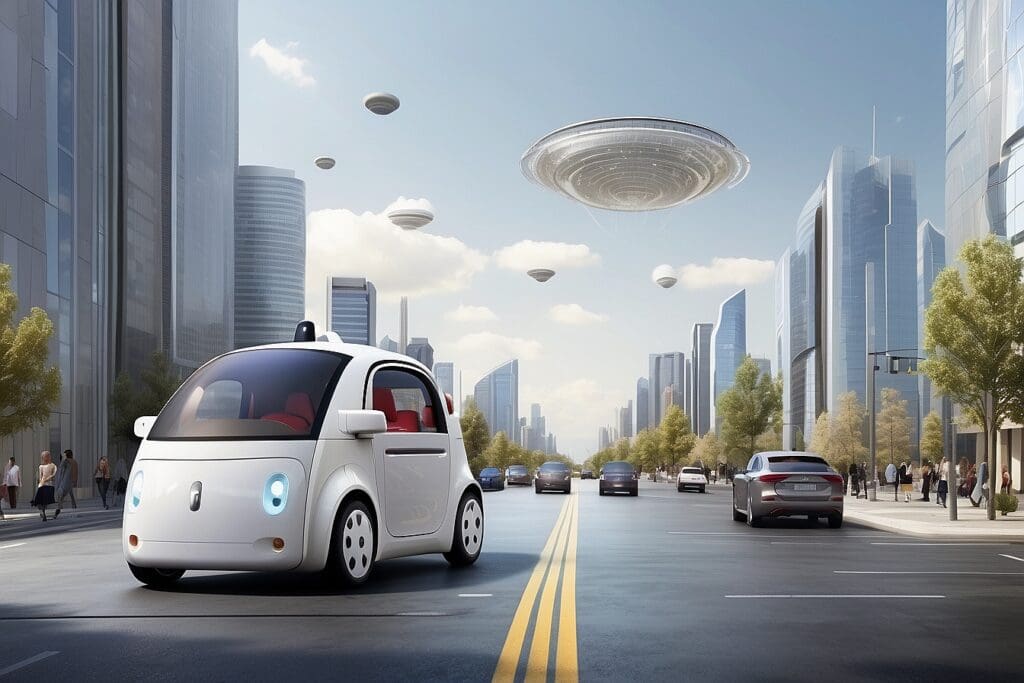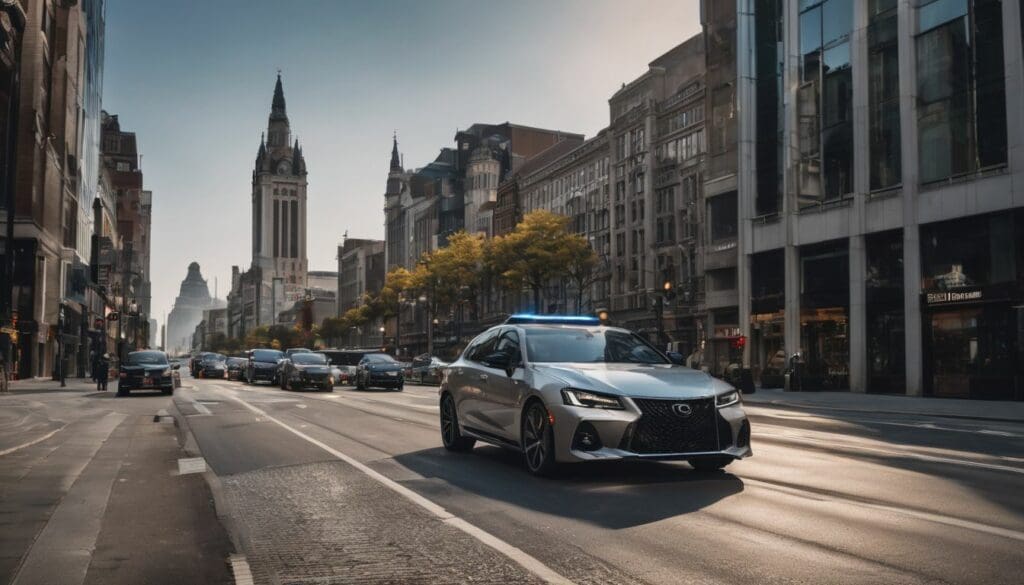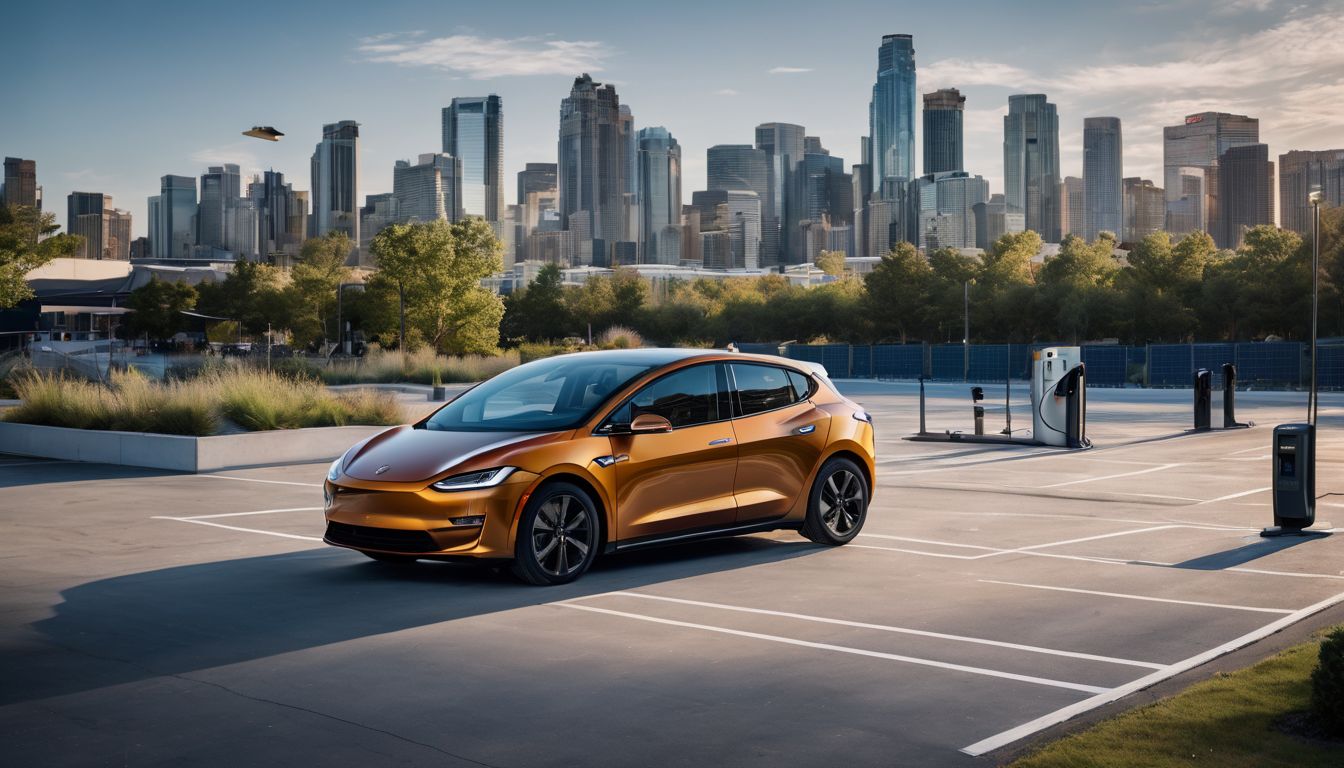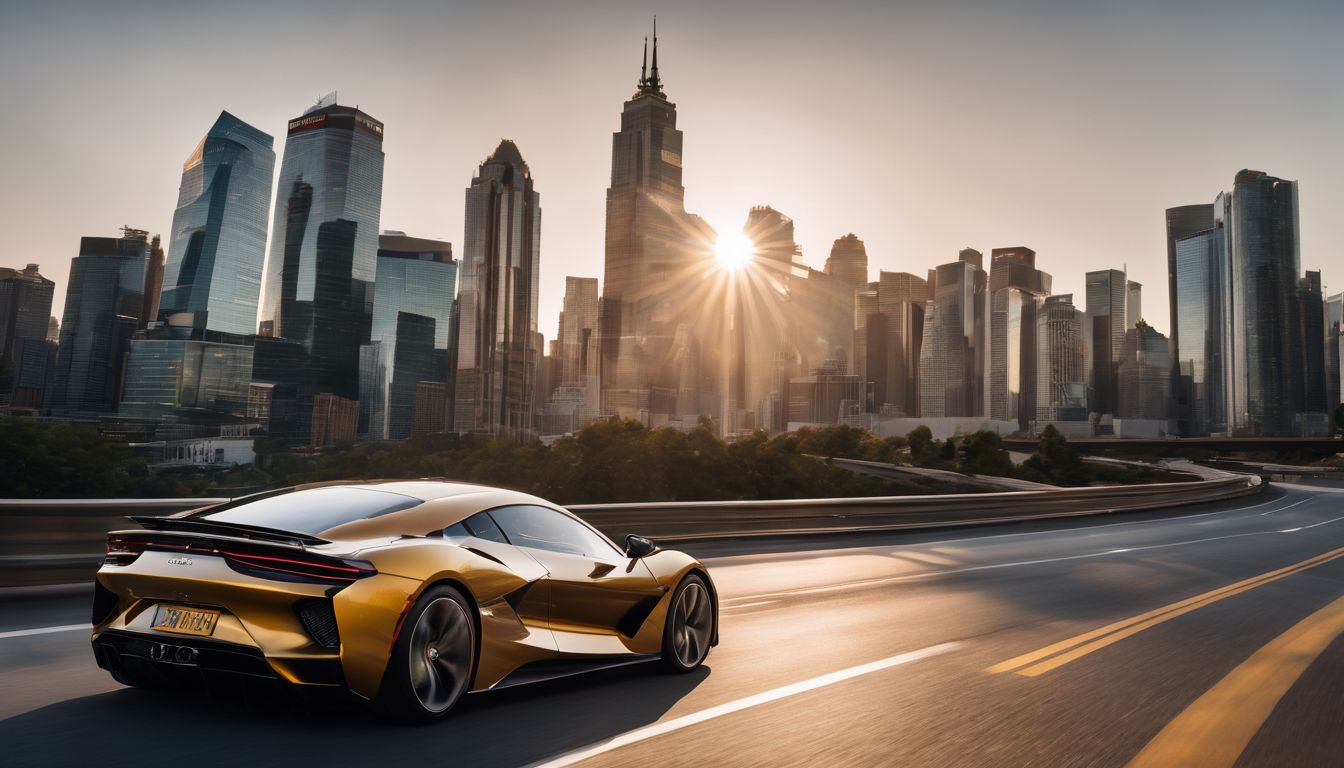We’ve all felt the frustration of being stuck in a traffic jam, haven’t we? Or the tiresome search for that elusive parking spot. Much like yourself, we’ve navigated these daily challenges and it’s with genuine enthusiasm that we share our insights into how driverless cars could completely reshape our urban environments.
Our thorough examination suggests autonomous vehicles might lead to a staggering 90% decrease in car numbers, initiating an extraordinary series of changes across the domain of city planning.
Do continue reading; you may well find that such a future is on our doorstep!
Key Takeaways
- Driverless cars could lead to a 90% reduction in the number of vehicles on our roads, resulting in more space for green areas and pedestrian zones.
- The need for parking spaces will decrease as autonomous vehicles become popular, creating opportunities to repurpose land into community spaces or housing developments.
- Urban landscapes will be transformed with changes to street design and buildings, leading to wider pavements and bike lanes that support sustainable transport.
- Property values may rise due to increased demand for space previously used for parking lots, influencing city planning towards efficient land use.
- Autonomous vehicles might encourage urban sprawl by making longer commutes more comfortable, which could put additional pressure on natural resources and demand thoughtful land use policies.
Key Impacts of Driverless Cars on Urban Planning

Driverless cars will reduce vehicle numbers, transforming urban landscapes and changing the design of buildings and streets. They will also impact property values and land supply, leading to infrastructure changes in cities.
Reduction in vehicle numbers
We’re witnessing a potential revolution in urban mobility with the advent of self-driving cars. This technology promises to significantly decrease the number of vehicles on our roads.
Imagine cities where fewer cars mean less congestion, offering a more livable environment for all. With autonomous cars efficiently sharing trips and coordinating routes, we can expect smaller fleets doing the work of what used to require many more vehicles.
Fewer vehicles will pave the way for sustainable urban planning, transforming how we use space within our cities. Instead of vast parking lots and multiple lanes catering to rush hour traffic, we could redesign these areas into parks, outdoor cafes or even community gardens.
This change not only supports conservation efforts but also enhances the quality of life by making our cities greener and more pedestrian-friendly. As we embrace driverless technology, it’s clear that its impact goes beyond transport; it’s about crafting smarter, cleaner cities for future generations.
Transforming urban landscapes
Driverless cars are transforming urban landscapes by reducing the need for parking spaces, allowing for the repurposing of land and buildings. With fewer vehicles on the road, cities can allocate space previously used for parking to green areas or additional infrastructure.
This transformation opens up opportunities for sustainable city design, promoting walking and cycling in safe and attractive environments while fostering a more connected community.
The development of driverless cars offers a chance to rethink urban planning with an environmentally conscious approach. By embracing this innovation, planners can work towards creating more livable cities with improved accessibility and reduced environmental impact.
Changes to buildings and streets
Changes to buildings and streets due to the rise of driverless cars will be significant. We must adapt designs to accommodate fewer parking spaces as autonomous vehicles require less space for parking.
With the need for fewer garages, we can repurpose these areas into green spaces or community facilities, enhancing environmental sustainability in urban planning.
As driverless cars increase in popularity, we can expect to see a shift away from traditional car-centric infrastructure towards more pedestrian-friendly environments. This could result in wider sidewalks, more bike lanes, and reduced road width that aligns with sustainable transportation initiatives – improving our overall quality of life while reducing our carbon footprint.
Impact on property values and land supply
As driverless cars transform urban landscapes, there will be a notable impact on property values and land supply. Urban areas may experience an increase in property values as parking spaces are repurposed for other uses, creating more demand for limited space.
This shift could also lead to an increased need for efficient land use planning to accommodate the changing transportation infrastructure, thus influencing the availability of developable land within cities.
In addition, with fewer personal vehicles and parking lots needed, there may be opportunities to repurpose underutilised land for commercial or residential development. As urban planners consider these changes in mobility behaviour and infrastructure needs, it is crucial to balance the benefits of increased property values with ensuring equitable access and affordability in both housing and commercial real estate developments.
Infrastructure changes
As driverless cars significantly affect property values and land supply, urban infrastructure will need to evolve to accommodate the growing influence of autonomous vehicles. The shift towards self-driving cars will demand changes in street design, traffic management systems, and public transportation networks.
Smart cities will have the opportunity to redesign existing roadways and create new transit options that cater to the needs of driverless cars while promoting sustainable and efficient urban development.
Urban planners must embrace innovative approaches to support this urban revolution by rethinking infrastructure design with a focus on enhancing livable city spaces through eco-friendly transportation technology.
Benefits of Autonomous Cars for Urban Planning
Autonomous cars have the potential to free up road space, reduce congestion and convert parking lots and fuel stations into new uses, leading to a more efficient urban landscape. This will also encourage urban sprawl while managing disruptions to land use in cities.
Freeing up road space
Driverless cars have the potential to free up road space by reducing traffic congestion and enabling smoother flow of vehicles. With fewer accidents and more efficient driving patterns, autonomous vehicles could optimise the use of existing roads, making it easier for all forms of transport to move around cities.
This will not only reduce the time people spend stuck in traffic but also lessen the environmental impact caused by idling cars.
Furthermore, as driverless cars can communicate with each other and coordinate their movements, they are likely to require less physical space between them when on the road, leading to a more streamlined use of urban streets.
As a result, our cityscapes may become less cluttered with parked cars or congested intersections due to better-organised traffic flow.
Converting parking lots and fuel stations into new uses
Driverless vehicle technology presents exciting opportunities for urban development. With a decline in the need for parking, many cities can potentially repurpose these areas into green spaces, affordable housing, or community facilities.
As fuel stations become obsolete due to the rise of electric-powered driverless cars, they could be transformed into charging stations or integrated with smart city infrastructure.
These changes offer promising solutions for transforming urban landscapes and reducing environmental impact. Reimagining parking lots and fuel stations as multi-functional spaces aligns with sustainable urban planning principles, creating more liveable and eco-friendly cities for future generations.
Encouraging urban sprawl
Driverless cars could potentially encourage urban sprawl by reducing the need for driver attention and allowing for longer commutes. This technology may enable people to live further away from city centers, leading to a spread of urban development into surrounding areas.
The availability of autonomous vehicles may increase the appeal of suburban living, as individuals could use travel time more efficiently or engage in other activities during their commutes.
As a result, this shift in transportation could impact land use planning, requiring cities to adapt and accommodate an increase in dispersed development.
Managing disruptions to land use
Driverless cars will bring significant disruptions to land use, requiring urban planners to adapt quickly. As autonomous vehicles reduce the need for parking spaces, areas designated for parking could be repurposed for green spaces or mixed-use developments.
This transition will necessitate a careful reevaluation of zoning regulations and infrastructure requirements in urban areas.
Moreover, with driverless cars encouraging increased urban sprawl, planners must address the potential strain on natural resources and energy demands. Balancing the expansion of city limits while protecting valuable agricultural lands is essential in ensuring sustainable development in the face of technological advancements like autonomous vehicles.
Challenges and Considerations for Planners

Addressing the potential disruptions to land use and shaping public perception of autonomous vehicles are key challenges for urban planners. To learn more about the impact of driverless cars on urban planning, keep reading!
Managing trip generation impacts
As urban planners, we must address the challenges of managing trip generation impacts resulting from the introduction of driverless cars. These innovative vehicles have the potential to alter travel patterns and create variations in peak-hour trips, affecting traffic flow and congestion levels within cities.
Our task involves devising strategies to mitigate these changes, ensuring that our transportation systems continue to operate safely and efficiently. By embracing this responsibility, we can foster sustainable urban environments that align with our conservation values.
In response to the influence of driverless cars on trip generation, we need to evaluate existing infrastructure and develop adaptive measures for integrating autonomous vehicles into our transportation networks.
Adapting to new social norms
As urban planners, we need to anticipate and adapt to the changes in social behavior that may accompany the widespread use of driverless cars. We should prepare for shifts in how people interact with public spaces and buildings, as well as how they choose to commute.
Our designs will have to accommodate new patterns of movement and potential adjustments in land use, impacting everything from traffic flow and pedestrian safety to parking needs.
The integration of driverless cars into daily life could alter societal attitudes towards car ownership, public transportation usage, and even concepts such as private property rights.
Shaping public perception
To shape public perception about driverless cars, we need to provide clear and accurate information to address concerns and misconceptions. We must engage in open dialogue with the community, addressing fears of job losses for drivers and potential safety issues.
Demonstrating the environmental benefits of autonomous vehicles is crucial in gaining support from environmentally conscious individuals. This can be achieved by highlighting reduced emissions and decreased traffic congestion due to more efficient driving patterns.
Emphasising the positive impact on urban planning – such as reclaiming space for green areas or pedestrian zones – will help garner public support for this innovative technology.
Educating the public about the potential for increased accessibility and mobility options, especially for those unable to drive due to age or disability, is essential. Communication strategies that focus on collaborative partnerships between government agencies, private sector stakeholders, and communities will help build trust in the societal impact of driverless cars.
Transition to electric power sources
Moving from shaping public perception to the transition to electric power sources, we must consider how autonomous cars will rely on alternative energy. Embracing electric power sources would significantly reduce greenhouse gas emissions and our reliance on non-renewable resources.
Integrating driverless cars that run on electricity into urban planning ensures a more sustainable future for transportation and the environment.
The transition to electric power sources not only promotes clean energy but also encourages a shift towards eco-friendly practices in transportation. By making this switch, we can contribute to reducing air pollution and preserving natural resources for future generations while advancing urban planning with environmentally-conscious strategies.
Conclusion
In conclusion, the impact of driverless cars on urban planning will be significant. The reduction in vehicle numbers will reshape our cities. Buildings and streets will undergo changes to accommodate new transportation needs.
Property values and land supply will be affected by this transformation. Infrastructure changes are inevitable as we embrace this future of transportation.
FAQs
1. How will driverless cars change urban planning?
Driverless cars, as the future of transportation, are set to transform urban planning by reducing the need for large parking areas and reshaping traffic flow patterns.
2. What benefits do self-driving vehicles bring to city design?
Self-driving vehicles offer benefits such as improved road safety, efficient use of space, and the potential for more green areas as less parking infrastructure is required.
3. Can urban planners rely on driverless technology today?
While still in development, urban planners must start considering how selfdriving cars will impact infrastructure needs and city layouts in preparation for their integration into daily life.
4. Will public transport be affected by the rise of driverless cars?
Yes, the introduction of driverless cars might lead to changes in public transport systems with a focus on complementing autonomous vehicle networks to enhance overall urban mobility.





